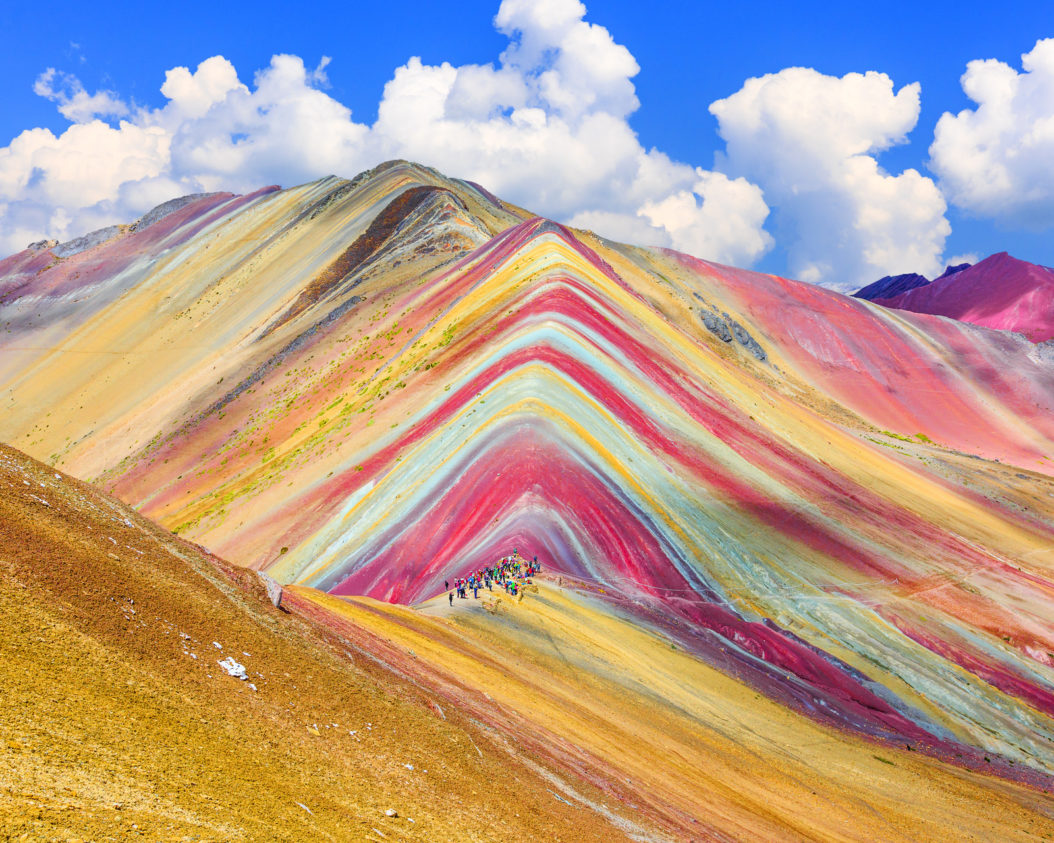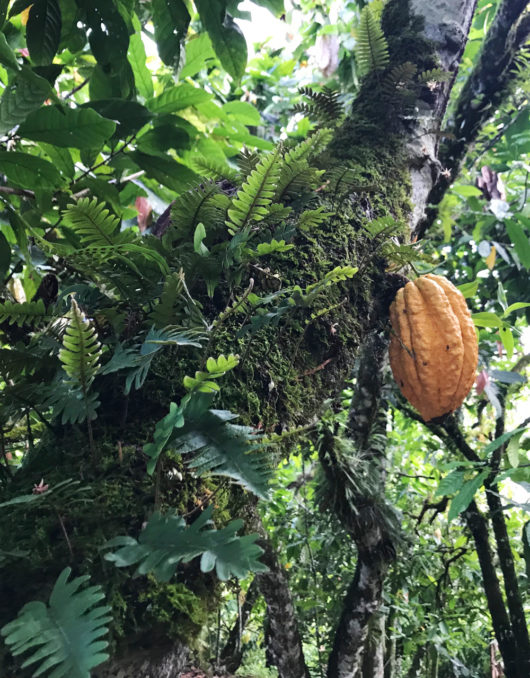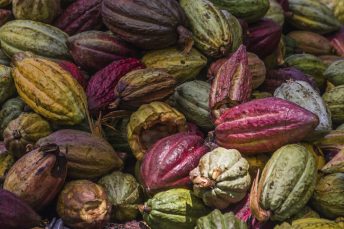Mystical Peru
A land of colourful diversity – and not just in terms of its cocoa
Text:
Alexander Kuhlmann
Photography:
istock © sorincolac
Alexander Kuhlmann
17 October 2019

High mountains, deep ravines, ancient ruins and pulsating cities. Peru is a land of juxtapositions and colourful diversity. And this is also reflected in its cocoa farming. 60% of all cocoa varieties known across the world come from the third-largest country in South America. Reason enough to take a closer look at this magical country on the Amazon River.
Unspoilt nature and tourist chic
If you were going to try to describe the Peruvian landscape in just a few adjectives, “spectacular” would probably be among them. The country has an incredibly colourful side. From the colourful ponchos worn by the alpaca herders, to the deep dark green of the thousand-year-old forests, to the breathtaking colours of the Rainbow Mountains (cover photo). It is a country that inspires artists. And enthrals tourists. The main attraction is, without doubt, the Inca town of Macha Picchu. Located in the region of Cusco, it sits on a ridge, some 2,430 metres above sea level. Almost every tourist will take the obligatory snapshot from the top of the old ruined city before heading home – ideally with an alpaca in the background.
And that brings us onto another highlight that many people associate with Peru: the alpaca. The wool from this camelid animal is extremely sought-after. In fact, it is one of the country’s most important exports. As such, it is highly likely that you will keep bumping into these cool, woolly customers as you travel through the country. There are estimated to be around 3.5 million alpacas in Peru at present. That is equivalent to 80% of the world’s alpaca population. To put that in context: there are around 32 million people living in the country; with just under 9 million of those living in the capital city Lima and the surrounding region.
Vinicunca, a mountain that wouldn’t look out of place in a fairytale, lies just less than 100 km south east of Machu Picchu. It boasts seven different colours and looks as though it has been covered in a rainbow. But it is not an illusion; instead it is a pure, unadulterated geological wonder. The colours are owed to different minerals, dating back millions of years, which have been deposited on top of each other in layers as a result of tectonic movements over time.
The Amazon River is, of course, the heart of the country and its green lung. It begins in the Peruvian Andes – fed by the Marañón and Ucayali rivers – and then meanders some 7,000 km through South America. The Amazonian rainforests and the land at the foot of the Andes are still home to untouched, pristine ecosystems that have not yet been spoilt by man. The emphasis here is very much on “not yet”. But more on that later…
Mysterious worlds of cocoa
The relationship between Peru and cocoa dates back to ancient times. The South American country is regarded as one of the most important cocoa-producing countries in the world: it is home to 60% of the globally renowned varieties of cocoa. It has been one of the largest cocoa producers in South America since the 19th century. Over 70,000 metric tonnes of cocoa are produced in Peru every year. Peru is also one of the countries in the world with the greatest biological diversity. The special character of the soil, the botanic abundance and the special climate in the valleys and on the slopes of the Andes all lend the different cocoa varieties their own unique fruity and bitter taste, with exciting notes of aromatic nuts and dried fruit. Peruvian cocoa has become famous across the world for these characteristic flavours and has attracted the attention of the finest chocolatiers in the world. In addition to criollo “fine flavour cocoa” – the official name for fine cocoa – the most important cocoa varieties include trinitario, forastero and the “white cocoa” piura.
Peru and sustainability...
Around 80 percent of the country is covered with tropical rainforest. A good 60 percent of this is officially classified as “primeval forest”. At first glance, these sound like good numbers. If only there were no humans with their vast requirements for space and raw materials. Each year, 220,000 hectares of forest falls victim to commercial farming, mining and oil extraction. It is an alarming statistic. And it makes it even more vital to convince Peruvian farmers of the importance of sustainable farming methods. Or, to put it another way: biodiversity. There are already some welcome initiatives teaching farmers agroforestry methods that can help them to increase their yields without the need to resort to monoculture farming and without damaging the biodiversity of the flora and fauna. The focus is on three key exports: bananas, coffee and cocoa.
There are cocoa co-operatives, like El Quinacho or Divisoria, that have already switched to fully sustainable methods – and that are benefiting from the global demand for organic Peruvian cocoa. Trading companies, like the Swiss firm Pronatec, are supporting the co-operatives in making this change; they are training the farmers in ecological forestry and providing expertise to aid investments in new tools and vehicles, warehouses and fermentation stations. Organic farming has now become an important pillar of the Peruvian economy. And there is great potential for the future. There has even been a law regulating organic products in Peru since 2006. It is monitored by local inspection authorities. When it comes to the cocoa sector, Peru is currently one of the most important global producers of organic cocoa – second only to the Dominican Republic.

Verwandte Artikel
The Chocolate Journal



